Hi there!
Situation:
I am in the process of developing an adapter. I terms of a UI I began with no extra tab for the adapter. Now I want to create a tab and want to realize it with React. Therefore I created a fresh adapter with the help of adapter-creator with all relevant options set for a React tab. When I launch a dev-server instance for this newly created adapter everything is fine.
So I began to adapt all the neccessary settings that I could find from all the different files from the newly created adapter to my adapter in development.
Problem:
The adapter in development does not render the react page but does render something different. For a better view here are two comparisons as a picture:
Source: Here you see what effectively is deployed within a dev-server instance. On the left hand side for the adapter in development and on the right the newly created adapter.
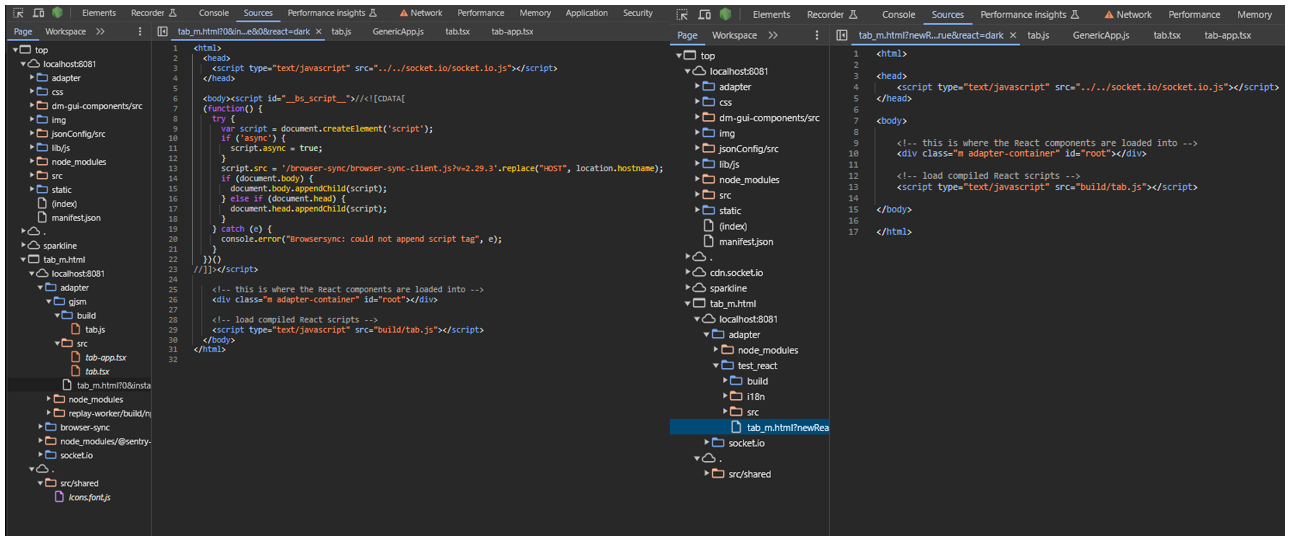
Runtime-Markup: Here you can see, what effectively gets rendered. On the left hand side for the adapter in development and on the right the newly created adapter.
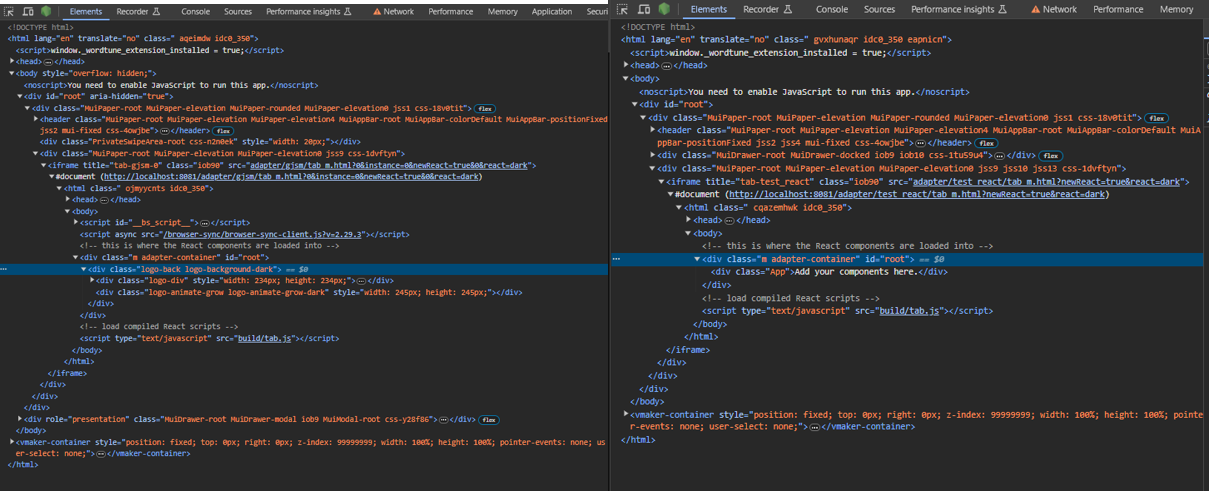
From my understanding something is going on during the compile step that breaks things. Maybe somewhere there it is not clear to the build chain that a React tab is the goal and instead some boilerplate for... maybe Materialized tabs or so... is pulled?
Is somebody out there that has a clue, what I need to check?
Maybe a few settings that I guess are important for the build step...
// io-package.json
"adminUI": {
"config": "json",
"tab": "materialize"
},
"adminTab": {
"singleton": false,
"name": {
// ...
},
"link": "",
"fa-icon": "info"
},
// package.json
"build": "build-adapter all",
"build:backend": "build-adapter ts",
"build:admin": "build-adapter react",
// admin/tsconfig.json
// Specialized tsconfig for the admin directory,
// includes DOM typings and configures the admin build
{
"extends": "../tsconfig.json",
"compilerOptions": {
"noEmit": false,
"outDir": "./build",
"sourceMap": true,
"sourceRoot": "./src",
"noImplicitAny": false,
"lib": ["es2018", "DOM"],
"jsx": "react"
},
"include": ["./**/*.ts", "./**/*.tsx", "../src/lib/adapter-config.d.ts"],
"exclude": ["./**/*.test.ts", "./**/*.test.tsx"]
}
 Das Modul liegt hier:
Das Modul liegt hier:
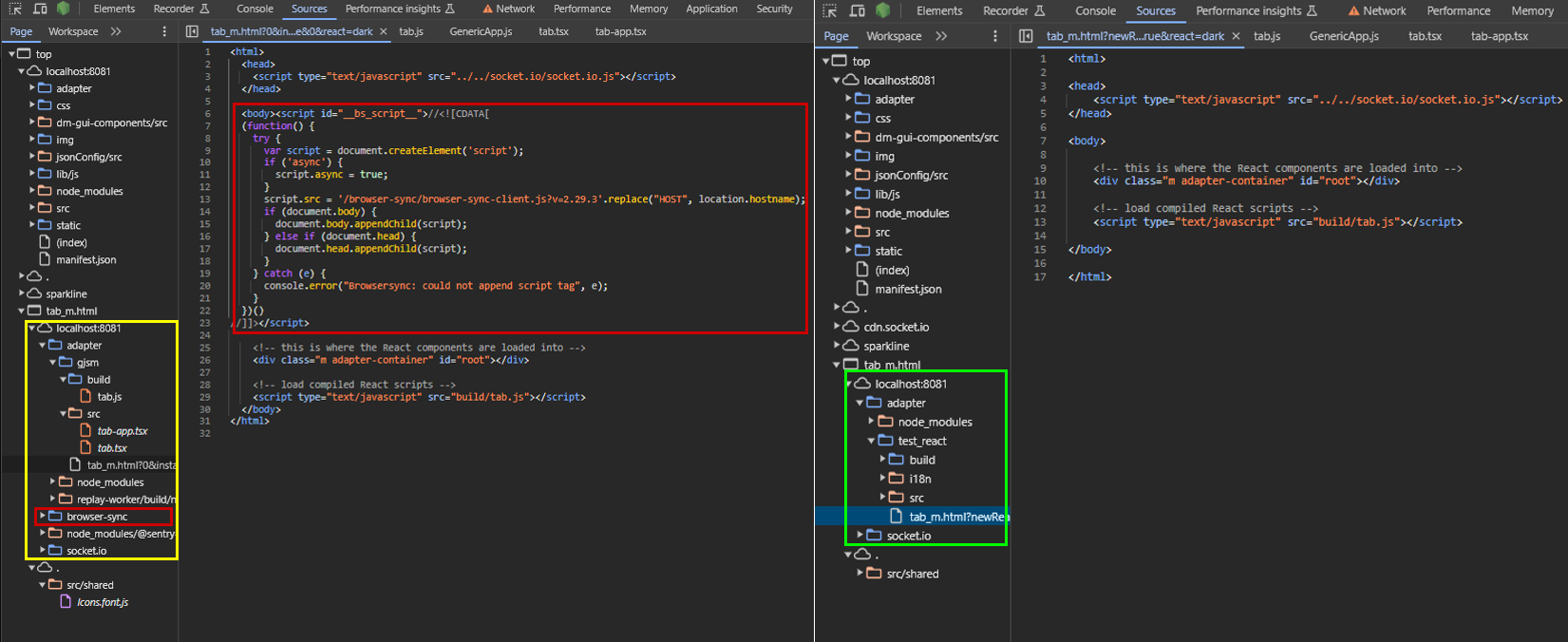 On the left side it is loaded as part of the IFrame containing the tab. On the right side it is not loaded as part of the tab. Instead it is loaded in the parent frame:
On the left side it is loaded as part of the IFrame containing the tab. On the right side it is not loaded as part of the tab. Instead it is loaded in the parent frame: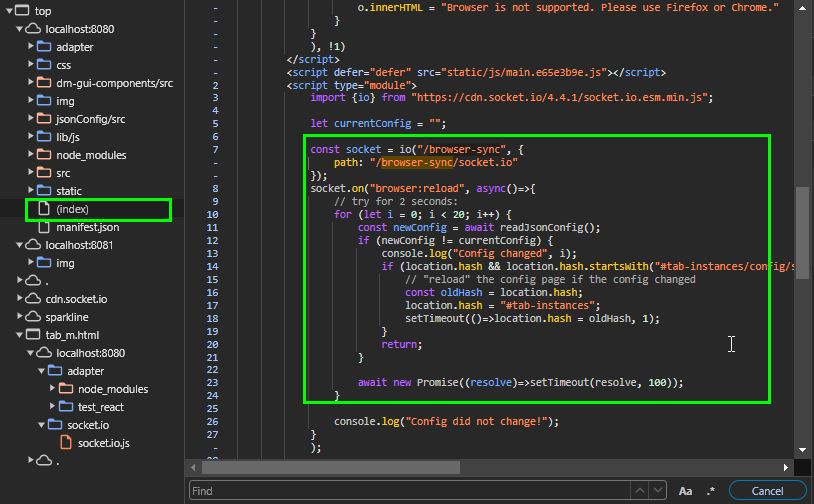
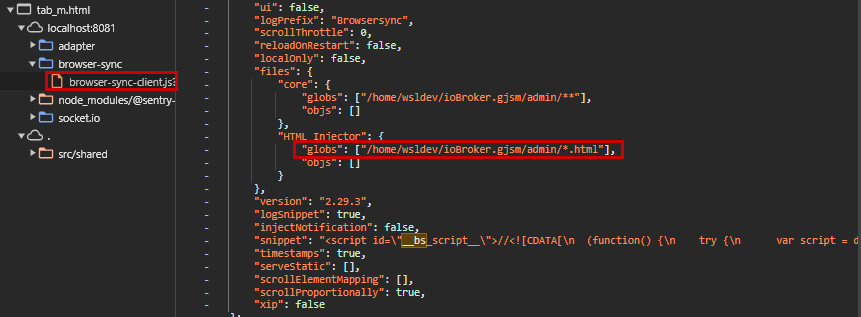


 Deine Zusammenfassung ist echt um Längen besser als all meine vielen erklärenden Worte
Deine Zusammenfassung ist echt um Längen besser als all meine vielen erklärenden Worte  Ich werde das Wording glaube ich so oder so ähnlich übernehmen
Ich werde das Wording glaube ich so oder so ähnlich übernehmen 